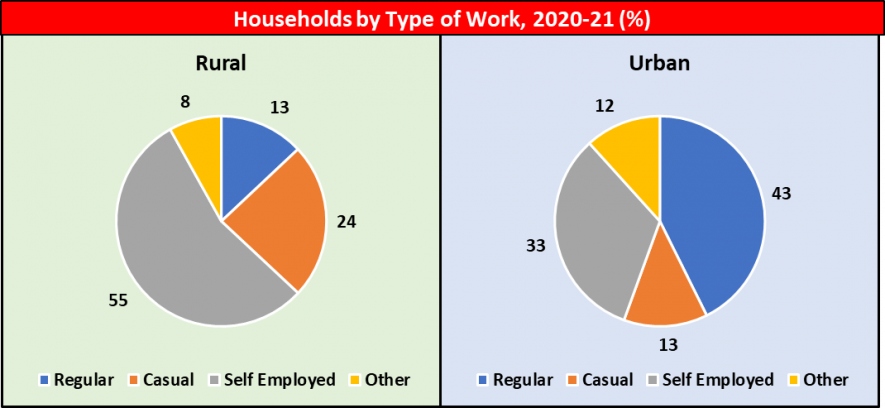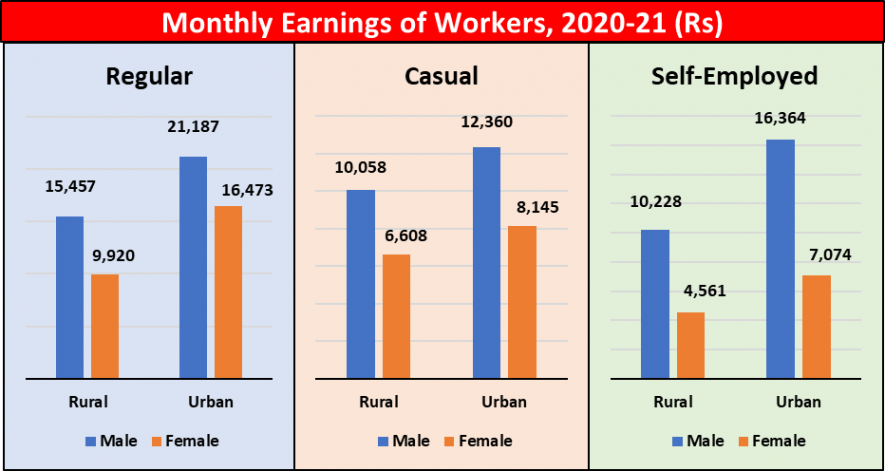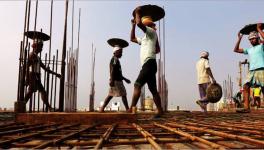Low Incomes Haunt India’s Growth
Representational use only.
Wage growth of households has declined from 8.2% in 2012-2016 to 5.7% in 2017-2021, according to a fresh study by a ratings agency. It will actually be even lower – around 1% - if inflation is taken into account. This slowing down of wage growth has happened in both rural and urban areas. In rural areas, wages grew at a meagre 2.8%, while in urban areas, the increase was 5.5%. Once adjusted to prevailing inflation, these growth rates turn negative. In rural areas, inflation-adjusted wage growth was reportedly (-) 3.7%, while in urban areas, it was (-) 1.6%. This means that real wages declined during 2017-21.
Despite the celebration of higher economic growth in recent months, declining incomes mean that people at large do not have sufficient buying power in their hands. These households contribute substantially to economic output, making up 44-45% of Gross Value Added (GVA). Persistent low incomes mean their contribution to aggregate demand is going to be very low. This, in turn, means that the chances of any economic recovery are dim because there will not be sufficient demand in the economy.
Finance minister Nirmala Sitharaman’s homilies to India’s corporate sector to invest more (and thus create more jobs) are going to fall on deaf ears because the corporate sector is enjoying all the concessions and tax cuts that the Modi government has offered without having to invest more. It will not invest more because who will buy? People just don’t have the buying power in their hands.
SCARCE REGULAR SALARIED JOBS
The government has discontinued the publication of consumer expenditure surveys that would be a proxy for household incomes. However, the Periodic Labour Force Surveys (PLFS) do give estimates of the earnings of the three basic types of workers based on their recall of the preceding week’s work status. These three categories are regular salaried workers, casual daily wage earners and self-employed persons.
The latest PLFS annual report published in June this year covers the period April 2020 to March 2021. According to this report, in rural areas, the predominant share of households (55%) is self-employed, largely in agriculture. This is followed by casual labour (24%), which is often seasonal and irregular work on daily wages. Regular, salaried workers make up just 13% of rural households. (See chart below)

In urban areas, regular workers comprise 43% of households while self-employed are 33%. Casual workers are 13%.
EARNINGS MEAGRE IN ALL JOBS
Let us look at the average earnings of these three types of households, shown in the chart below. Besides the urban regular male workers who get just over Rs 21,000/month, none of the other categories of workers earn a sufficient wage for a dignified life, free of want and struggle. What is striking in this chart is the deep chasm between rural and urban incomes, male and female incomes, and incomes of regular salaried workers and casual workers or even self-employed earners.

In rural areas, the largest category of earners is the self-employed, mostly farmers. In this work, male earners get Rs 10,228/month, while female earners get less than half that (Rs 4,561). Casual workers who work for daily wages and suffer very onerous working conditions are the least paid of all. Even in urban areas, a male casual worker will earn just Rs 10,058/month, while the female worker will get just Rs 6,608. In urban areas, earnings are slightly better at Rs 12,360 for men and Rs 8,145 for women. These monthly wages for casual workers are projected from daily earnings data that was collected in the PLFS. In reality, there will be days when there is no work interspersed with days of work.
The extremely low levels of earnings of women workers across the board – whether rural or urban, whether casual, regular or even self-employed – reveals one of the reasons behind the low work participation rates of women in work. With this kind of wages, and with all the other difficulties in going out for work, including carrying the double burden of having to do all the work at home, too, it is not surprising that women are actively discouraged from working.
WHAT CAN THE GOVT. DO?
Three transformative steps need to be taken by the government if the dire situation has to be salvaged and some relief offered to struggling families of working people. These are:
1. Raise the minimum wage for unskilled industrial workers and employees of establishments to Rs.26,000 per month and provide inflation-linked Dearness Allowance (DA). Wages for other categories like semi-skilled and skilled workers or clerical and other employees will need to be increased accordingly. This will mean not only central notification for central government workers/employees but also State level notifications. The demand for Rs 26,000, put forward by all 10 central trade unions, is based on the accepted formula of 2300 kcal equivalent food for a three-unit family and additional expenditures for clothing, rent etc., and the 1991 Supreme Court judgement in Raptakos Brett that directed an additional 25% hike for the education of children and other expenses of the family.
2. Enact a comprehensive law for agricultural workers that includes a fair minimum wage and other benefits. It is shocking that as the Amrit Kaal of 75 years since Independence is being celebrated, there is no comprehensive law for the welfare of agricultural labourers who make up India’s largest economic class. An increase in their wages will immediately transfer enormous purchasing power in the hands of people that will give a fillip to the whole economy. This has the support of most farmers and agri-workers’ unions in the country.
3. Bring in a law assuring Minimum Support Price to farmers for a range of agricultural produce. This MSP should be calculated as 150% of the comprehensive cost of production (known as C2), as recommended almost twenty years ago by the National Farmers Commission headed by MS Swaminathan. This demand, too, has the support of most farmers’ organisations.
Once these steps are initiated, the country can really be put on track to become a superpower and start tackling issues of malnutrition, unemployment, disease and lack of education. The Modi government will have to abandon its present policies of just helping the rich and cajoling them to invest more or create jobs.
Get the latest reports & analysis with people's perspective on Protests, movements & deep analytical videos, discussions of the current affairs in your Telegram app. Subscribe to NewsClick's Telegram channel & get Real-Time updates on stories, as they get published on our website.























